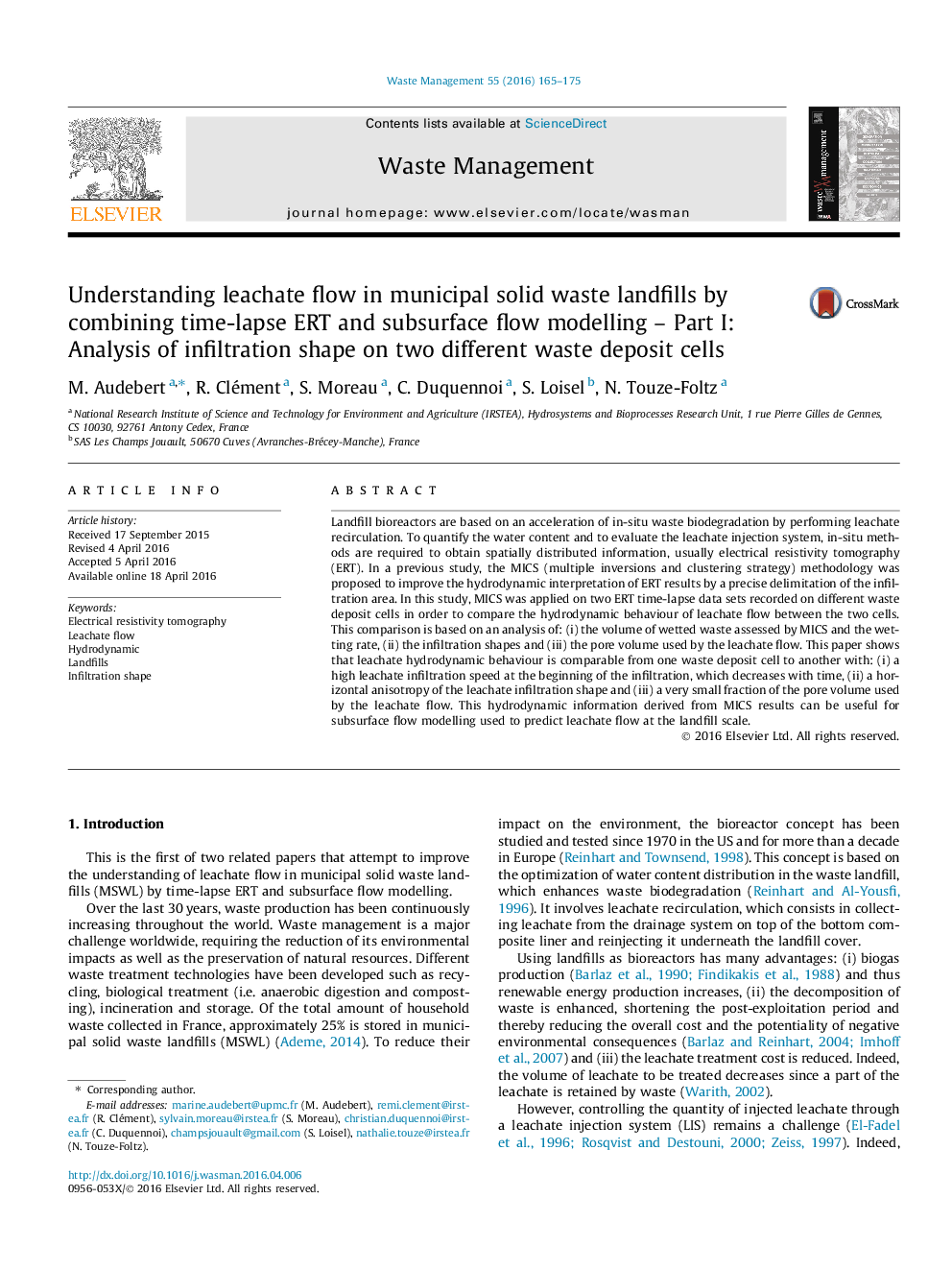| Article ID | Journal | Published Year | Pages | File Type |
|---|---|---|---|---|
| 4471193 | Waste Management | 2016 | 11 Pages |
•MICS on two ERT time-lapse monitoring.•Leachate flow behaviour.•Useful for hydrodynamic models.
Landfill bioreactors are based on an acceleration of in-situ waste biodegradation by performing leachate recirculation. To quantify the water content and to evaluate the leachate injection system, in-situ methods are required to obtain spatially distributed information, usually electrical resistivity tomography (ERT). In a previous study, the MICS (multiple inversions and clustering strategy) methodology was proposed to improve the hydrodynamic interpretation of ERT results by a precise delimitation of the infiltration area. In this study, MICS was applied on two ERT time-lapse data sets recorded on different waste deposit cells in order to compare the hydrodynamic behaviour of leachate flow between the two cells. This comparison is based on an analysis of: (i) the volume of wetted waste assessed by MICS and the wetting rate, (ii) the infiltration shapes and (iii) the pore volume used by the leachate flow. This paper shows that leachate hydrodynamic behaviour is comparable from one waste deposit cell to another with: (i) a high leachate infiltration speed at the beginning of the infiltration, which decreases with time, (ii) a horizontal anisotropy of the leachate infiltration shape and (iii) a very small fraction of the pore volume used by the leachate flow. This hydrodynamic information derived from MICS results can be useful for subsurface flow modelling used to predict leachate flow at the landfill scale.
